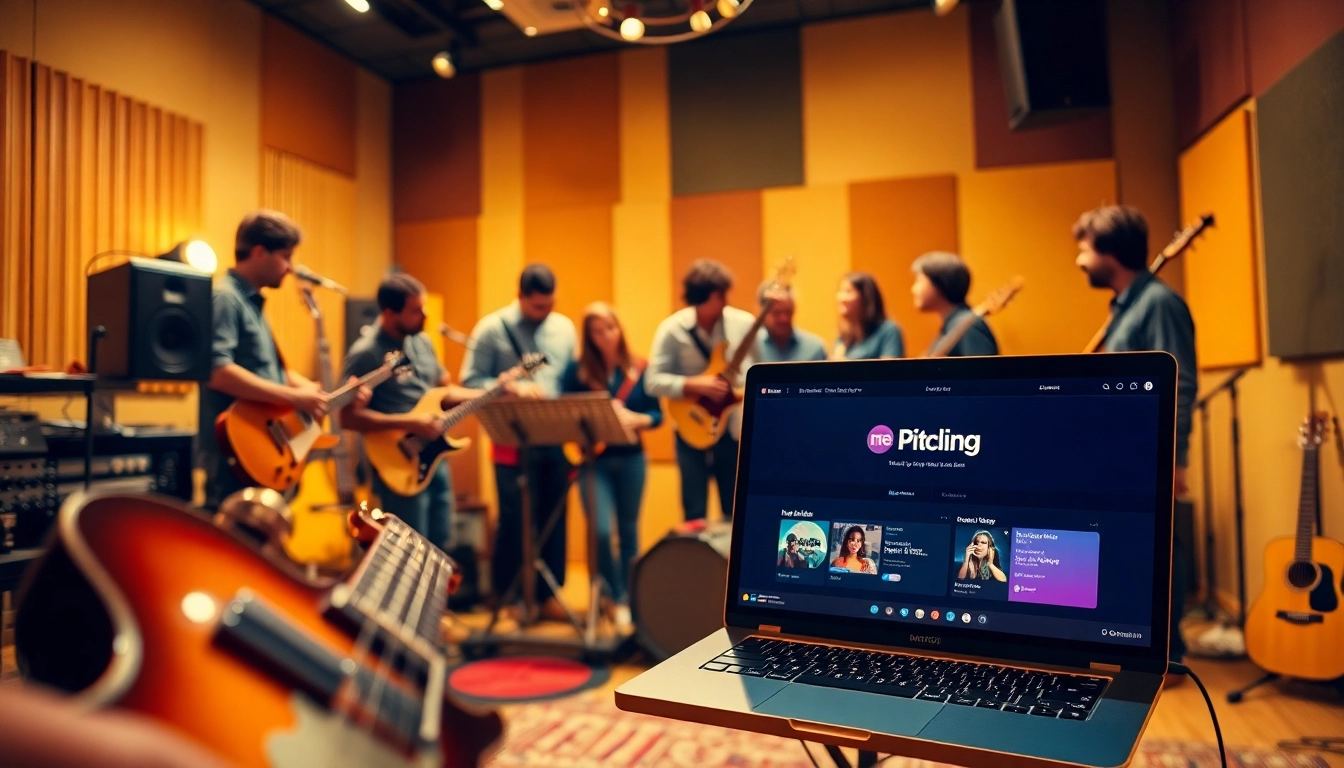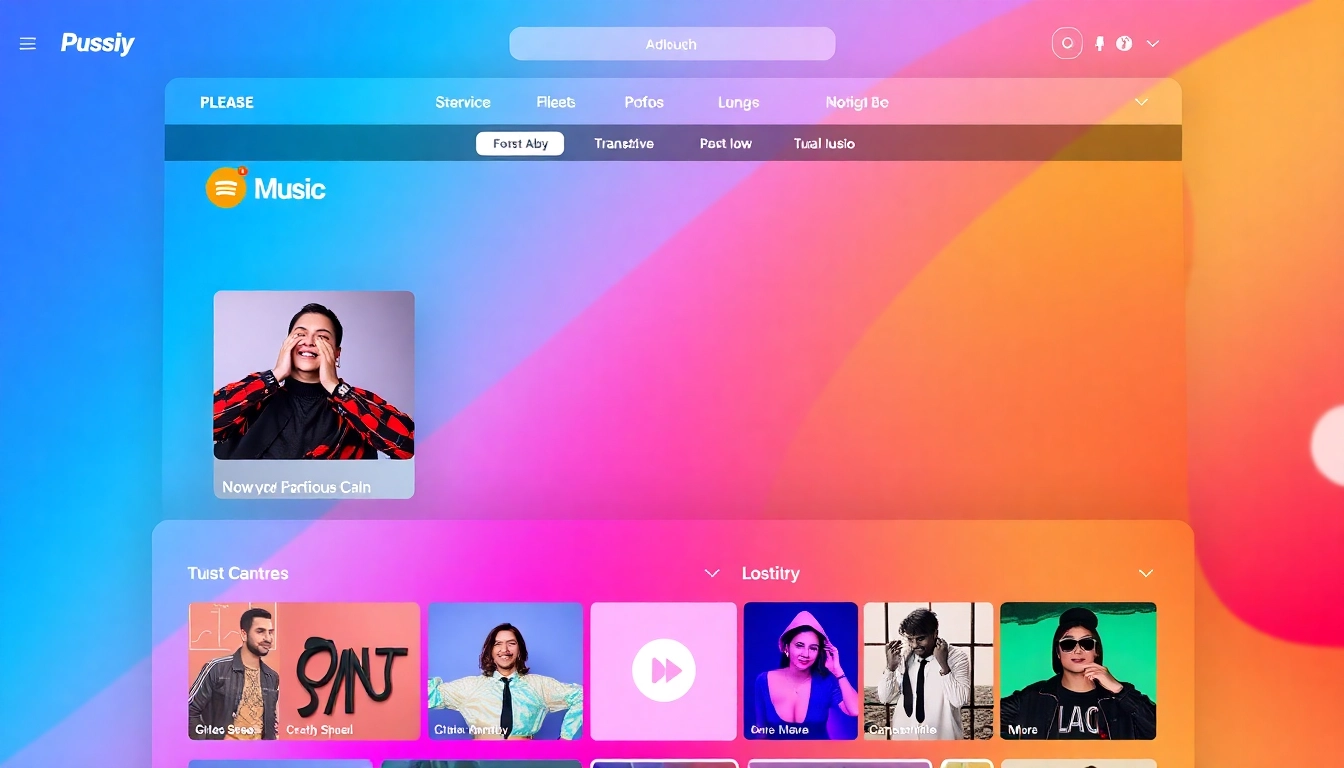Understanding Music Pitching: The Basics
What is Music Pitching?
At its core, music pitching refers to the process of presenting your musical creations, whether they are singles, albums, or tracks, to various stakeholders in the music industry. The goal? To secure placements within playlists, radio stations, or features in music blogs and platforms that can propel an artist’s career forward. This not only includes independent musicians looking to get their work heard but also established artists aiming to reach new audiences through strategic promotions.
Historical Context of Music Pitching
The concept of music pitching is not new; it dates back to the early days of the music industry when artists had to convince record labels to sign them. Originally, artists would either perform live to showcase their talent or submit demo tapes to label executives. However, in the digital age, music pitching has evolved significantly. With the rise of streaming platforms, the approach has shifted from traditional record label submissions to engaging directly with playlist curators and online influencers who have substantial followings.
Importance of Music Pitching for Artists
For artists, mastering the art of pitching is critical. A well-crafted pitch can open doors to diverse listener bases and create opportunities far beyond what an artist could achieve organically. Music pitching is integral to building an audience and achieving success in today’s competitive landscape. Through effective music pitching practices, artists can harness the power of curated playlists to gain visibility, boost streaming numbers, and ultimately achieve greater financial success.
Preparing Your Music for Pitching
Critical Elements of Your Submission
When preparing to pitch your music, there are several critical elements that you should focus on. A complete submission includes:
- High-Quality Audio Files: Always present the best possible audio quality. Lossless formats like WAV are preferred by many curators.
- Artwork: An eye-catching cover art plays an essential role in attracting listeners and curators alike.
- Biography: A concise artist bio highlights your musical journey, influences, and achievements. Make it engaging and personal.
- Social Media Links: Provide links to your social media pages so curators can check your following and engagement.
- Press Kit: A digital press kit containing essential information and press coverage gives curators a sense of your marketability.
Common Mistakes to Avoid in Music Pitching
Understanding common pitfalls can save artists a lot of time and frustration. Here are some mistakes to avoid:
- Generic Pitches: Tailor each pitch to the specific curator or outlet. A one-size-fits-all approach is less effective.
- Ignoring Guidelines: Each platform has its own submission guidelines. Failure to follow these can lead to automatic disqualification.
- Overly Long Messages: Be concise. Curators are busy and prefer clear, succinct pitches that get right to the point.
- Neglecting Follow-Ups: A polite follow-up a week after your submission can be helpful, but avoid being overly persistent.
How to Tailor Your Pitch for Different Platforms
Each platform—whether it’s a Spotify playlist, music blog, or radio station—has its own nuances. Here are tips for tailoring your pitch:
- Spotify Playlist Curators: Highlight the song’s potential for streaming, including audience demographics, and how it fits into their playlist theme.
- Music Blogs: Focus on storytelling. Explain how your song relates to current trends or cultural moments that resonate with blog audiences.
- Radio Stations: Provide background information on the track’s production and theme, emphasizing radio playability and audience engagement potential.
Effective Strategies for Pitching to Curators
Building Relationships with Playlist Curators
To effectively pitch your music, consider building relationships with playlist curators. Networking is invaluable within the industry. Here are strategies to develop such connections:
- Engagement: Engage with curators on social media. Comment on their playlists and show genuine appreciation for their work.
- Attending Events: Participate in industry events, webinars, or local gigs where curators might be present.
- Personalized Emails: Instead of sending generic pitches, try sending individual, personalized emails that demonstrate a genuine interest in their specific playlists.
Utilizing Social Media for Successful Music Pitching
Social media serves as a powerful tool in the music pitching process. By utilizing platforms like Instagram, Twitter, and TikTok, artists can build their brand and connect with curators. Here are ways to use social media effectively:
- Content Creation: Regularly share engaging content related to your music, including behind-the-scenes looks, teasers, and performance clips.
- Hashtag Strategies: Use relevant hashtags to make your posts discoverable by curators and music enthusiasts alike.
- Collaboration: Consider collaborating with influencers or other artists to expand your reach and increase your visibility.
Understanding the Curatorial Process on Spotify
Spotify curators receive thousands of submissions daily. Understanding how they select songs can inform your pitching strategy. Key points include:
- Submission Timing: Submit your song at least seven days prior to release day to feature it on Release Radar.
- Song Metrics: Curators often look at a song’s metrics (streams, saves, playlist additions) to gauge its popularity and potential.
- Relevance: Pitch songs that fit the genre and mood of the playlist rather than sending music that doesn’t align with their priorities.
Leveraging Insights and Analytics
Using Data to Enhance Your Pitching Strategy
Data and analytics are vital in refining your music pitching strategy. Here’s how to leverage these metrics:
- Streaming Data: Analyze streams and listener demographics to target your pitches effectively.
- Engagement Metrics: Evaluate your social media posts’ engagement to understand what resonates with your audience.
- Competitor Analysis: Observe successful releases similar to yours to gain insights into what worked well for them.
Tools for Tracking Music Performance
Utilizing various tools can significantly improve your ability to track music performance and engagement. Some notable tools include:
- Spotify for Artists: Provides valuable insights into streaming numbers and listener engagement.
- Apple Music Analytics: Offers a similar suite of analytics for measuring song performance on that platform.
- Social Media Analytics Tools: Platforms like Hootsuite and Buffer give insights into your social media engagement levels.
Learning from Demos and Feedback
Feedback is an often-underestimated resource. Here’s how you can learn from demos and responses:
- Collect Feedback: Create opportunities for peers, mentors, or industry professionals to listen and provide feedback on your music.
- Iterative Improvements: Use constructive criticism to refine your music and pitches. Continuous improvement is key to success.
- Case Studies: Examine successful pitches and note which aspects were commended, using these insights to inform your future efforts.
Measuring Success in Music Pitching
Key Performance Indicators for Music Pitching
Success in music pitching can be gauged through various performance indicators. Key metrics include:
- Playlist Placements: The number of times your music is added to curated playlists is a direct measure of your pitching success.
- Stream Growth: Monitor streams and audience growth pre-and post-pitch to evaluate impact.
- Engagement Rates: Track social media engagement to understand audience interaction levels.
Adjusting Your Strategy Based on Results
Being adaptable is important in the ever-changing music landscape. Here’s how to adjust your strategy:
- Analyze Performance Data: Regularly review your performance data to identify what works and what does not.
- Stay Informed: Keep up with music trends and adjust your pitches to align with current tastes and preferences.
- Iterate and Refine: Use insights from unsuccessful pitches to refine subsequent strategies and approaches.
Case Studies: Success Stories in Music Pitching
Real-world examples of artists who successfully navigated the pitching process can provide valuable lessons. For instance:
- Artist XYZ: By understanding their target audience and tailoring their pitch for Spotify playlists, Artist XYZ secured placements resulting in a 300% increase in streams within a month.
- Band ABC: Utilizing organic social media engagement and personalized outreach to curators led Band ABC to feature their latest single on major blogs, which enhanced their public presence and follower count.
Mastering the art of music pitching is essential for any artist looking to break through the noise in the crowded music industry. By understanding the basics, preparing effectively, and employing strategic approaches, artists can successfully navigate the world of music pitching and increase their chances of deserved recognition.



